It may seem a bit incongruous - when driving through the somewhat bland Orange County suburbs of Irvine - to come across towering, brutalist concrete sculptural forms scattered amongst the trees, but that was exactly what architect William Pereira designed in his master plan for that campus in 1963.
Pereira, who also designed the master community plan for the city of Irvine, was also responsible for San Francisco's Transamerica Pyramid, UCSD's Geisel Library, the original buildings of the LA County Museum of Art, the LAX Theme Building, and many, many others...
Hell, he even made the cover of Time Magazine...
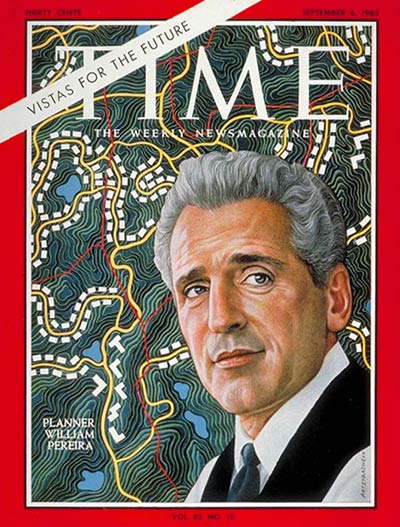
It was a bold plan at the time, and still is. Pereira wanted to create a sort of academic village in a wooded, hilly park. At the time, it was a barren hillside of treeless cow pastures. Instead of flattening the hilly terrain with bulldozers, he created floating white concrete platforms suspended over the ground on pedestals, that would support the buildings and present them like individual sculptures on display in a giant museum sculpture garden.
Most of the original buildings are designed in a ring, terraced around this central wooded park, with the sciences clustered in the south and the humanities in the north end. This ring configuration means that no building is more than ten minutes' walk.
The buildings were brutalist and very modern, with passive solar features to capture the sea breeze and keep them cool without air-conditioning. The fins and sunshades provided an opportunity to create different patterns, and each building - which represented a different academic department - had its own pattern and therefore identity.
Better than most, these designs create wonderful and fascinating patterns of shadows and sun that change constantly as the sun moves across the sky.
Courtyards with shade trees were integrated into the designs on the platforms.
To create the wooded landscape from a barren hillside, Pereira enlisted the help of landscape architects Robert Herrick Carter, C. Jacques Hahn, J. Charles Hoffman, and Frederick Lang. They worked closely with Pereira and the other architects to create a landscape that appeared natural, as if it had always been there, but which included trees and plants that also complemented the designs of the building facades. What appears natural is actually quite deliberate and orderly when you look closely.
It was a brilliant plan and the effect of these giant sculptures floating on the hillsides amongst the trees was - and remains - quite striking. Pereira's version of modernism - elegant, sculptural forms perched lightly within a natural landscape - was universally applauded and a huge success... until it wasn't.
By the early 70s, Modernism - and specifically Brutalism - was starting to be seen as a sort of dystopia rather than utopia. In fact, in 1972, the entire campus was used to represent an oppressive totalitarian state in the film "Conquest of the Planet of the Apes".
In 1977, Pereira was replaced as campus architect by David Neuman, who immediately announced that he was throwing out Pereira's careful plan and that the campus was "growing up". By this, he meant that he was abandoning the pastural setting to create a more urban campus that no longer respected the circular design. Neuman invited post-modern architects like Charles Moore, Venturi & Brown, and Robert A.M. Stern to design new buildings on campus. Gone were the modernist patterns and details, as well as the concrete pedestals floating over the landscape. The bulldozers had arrived.
Charles Moore (a post-modern architect who has done some beautiful work, such as Sea Ranch, but who also designed one of my personal least favorite projects ever, the Piazza d'Italia in New Orleans), said of the UCI campus and Pereira's work that it "suffered from the failed optimism of the 1960s." Here's how Mr. Moore decided to improve the built environment on campus...
Thank you, Mr. Moore. You're right - I don't feel nearly as optimistic anymore.
Leon Whiteson, architecture critic for the LA Times, wrote in a December 1988 article that Pereira's buildings were "over-scaled and boringly detailed."
I have a somewhat personal connection to UCI. In 1990-1992, my best friend at the time was a student here and I used to to stay with him in the dorms quite a bit. I remember already how interesting I thought the architecture was around the quad, but how he was telling me that everyone referred to the old buildings as giant cheese graters.
Have the caretakers of Pereira's modernist heritage at UC Irvine learned from past mistakes and come back to a more appreciative stance in his regard? It would appear not.
As I was wandering around campus yesterday afternoon, I came up to Steinhaus Hall, which is one of the original buildings designed by Pereira in 1963. It originally looked like this:
But in 2008, when the screens needed to be replaced for an earthquake retrofit, the campus architect decided to just get rid of them altogether and replace them with this...
Zero fucks were given, as the expression goes. So please go and enjoy the remaining buildings while you can, before the next "earthquake retrofit" takes down more of these gems.
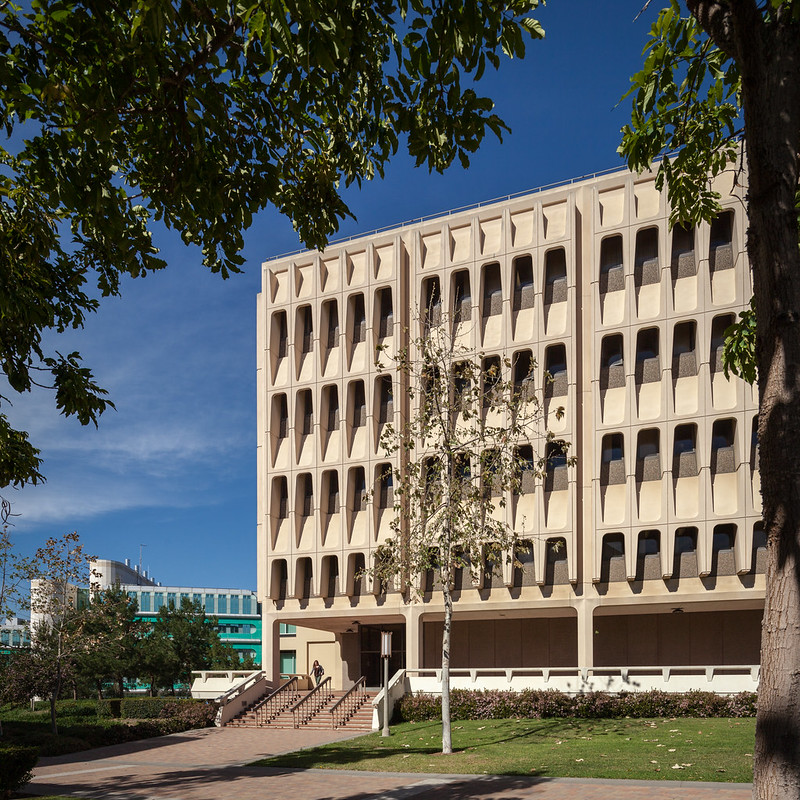
For more information on another University of California campus that was (and continues to be) defined by its modernist/brutalist heritage, please check out my posts on UC San Diego here, here and here.
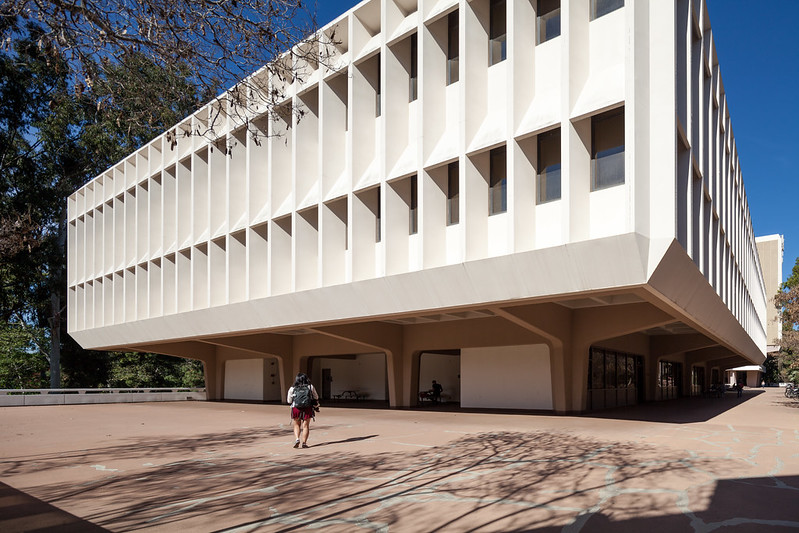 |
| Computer Science Building. Photo ©Darren Bradley |
Hell, he even made the cover of Time Magazine...

It was a bold plan at the time, and still is. Pereira wanted to create a sort of academic village in a wooded, hilly park. At the time, it was a barren hillside of treeless cow pastures. Instead of flattening the hilly terrain with bulldozers, he created floating white concrete platforms suspended over the ground on pedestals, that would support the buildings and present them like individual sculptures on display in a giant museum sculpture garden.
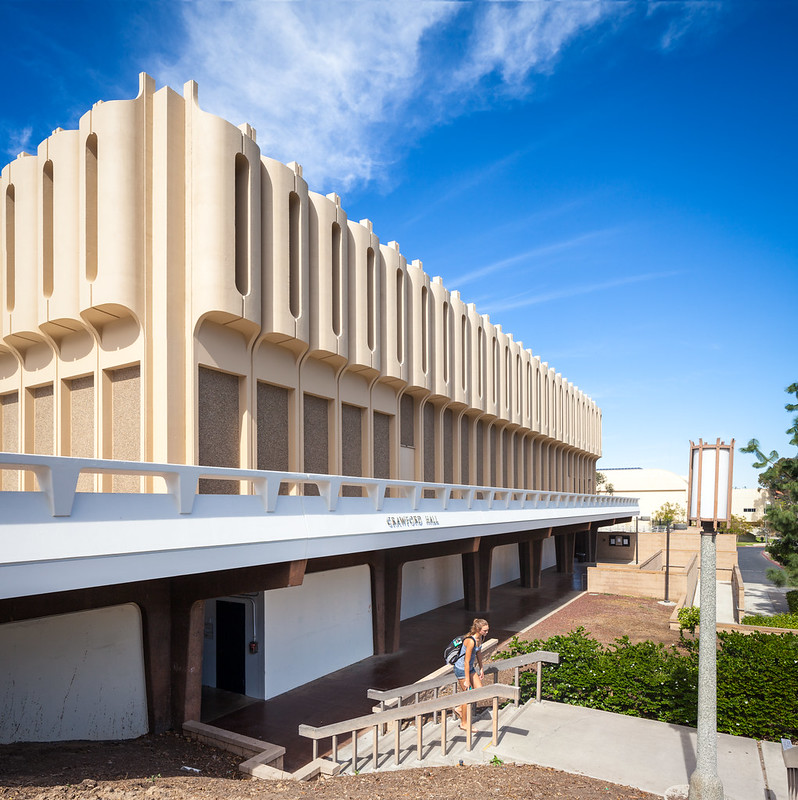 |
| Another view of Crawford Hall showing the platform it sits on. Photo ©Darren Bradley |
 |
| Original 1963 rendering of UC Irvine by Pereira's office. You can see the ring concept, with Aldrich Park in the center. Rendering courtesy of UC Irvine Archives. |
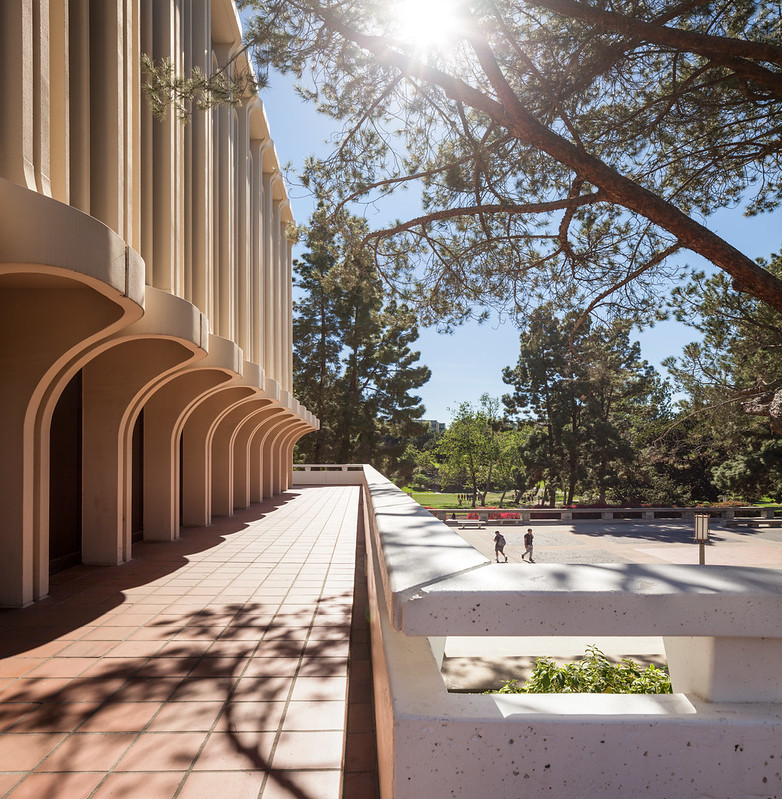 |
| Detail of the sun shades on the Langson Library. Photo ©Darren Bradley |
 |
| The Langson Library by William Pereira Associates, with Jones & Emmons and Blurock Ellerbroek Associates (1963). Photo ©Darren Bradley |
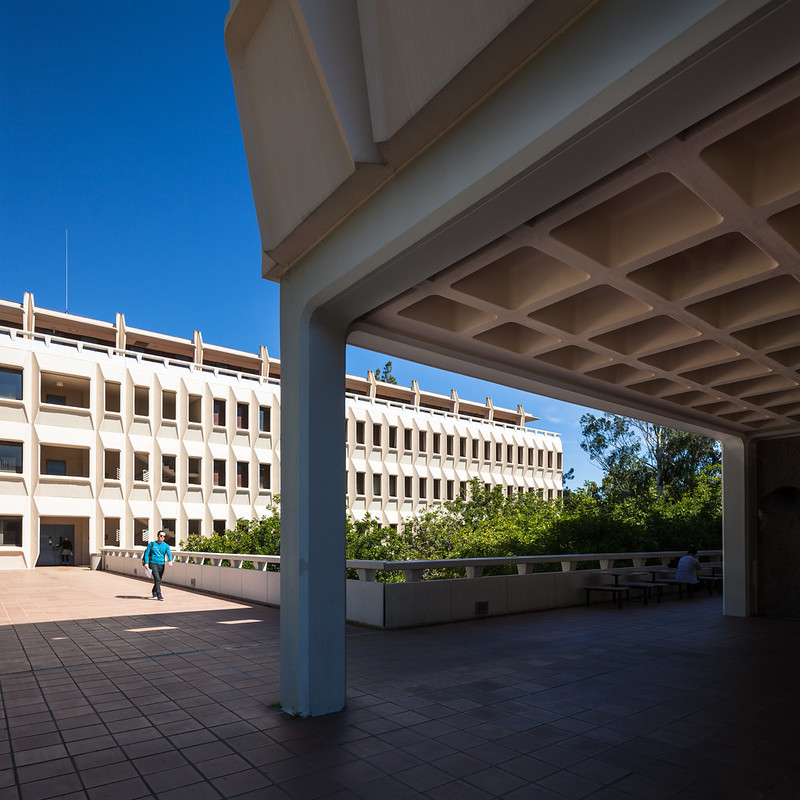 |
| Murray Krieger Hall was one of the buildings designed by Pereira personally, along with Jones & Emmons and Blurock Ellerbroek Associates (1963 - 1965). Photo ©Darren Bradley |
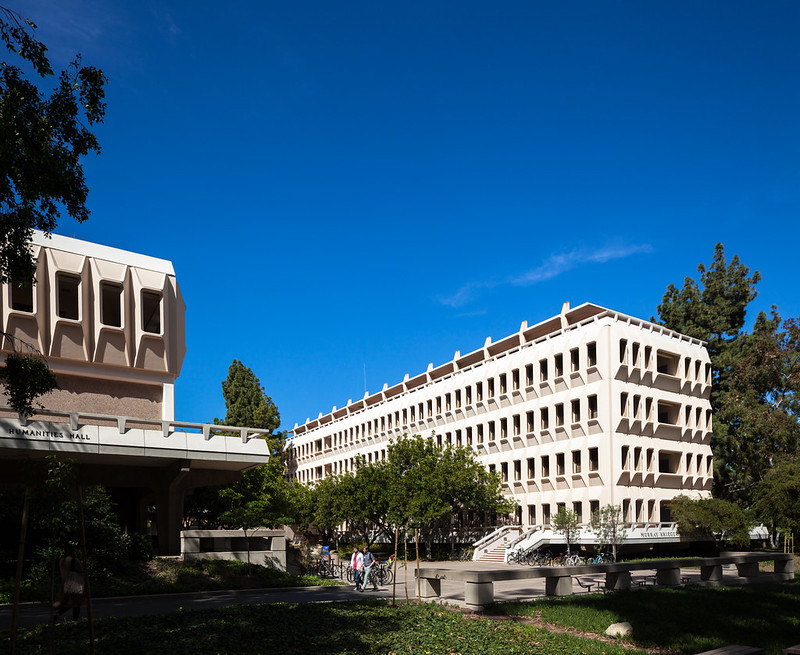 |
| Krieger Hall. Photo ©Darren Bradley |
It was a brilliant plan and the effect of these giant sculptures floating on the hillsides amongst the trees was - and remains - quite striking. Pereira's version of modernism - elegant, sculptural forms perched lightly within a natural landscape - was universally applauded and a huge success... until it wasn't.
By the early 70s, Modernism - and specifically Brutalism - was starting to be seen as a sort of dystopia rather than utopia. In fact, in 1972, the entire campus was used to represent an oppressive totalitarian state in the film "Conquest of the Planet of the Apes".
 |
| Screen capture from the film "Conquest of the Planet of the Apes", with Krieger Hall in the background. |
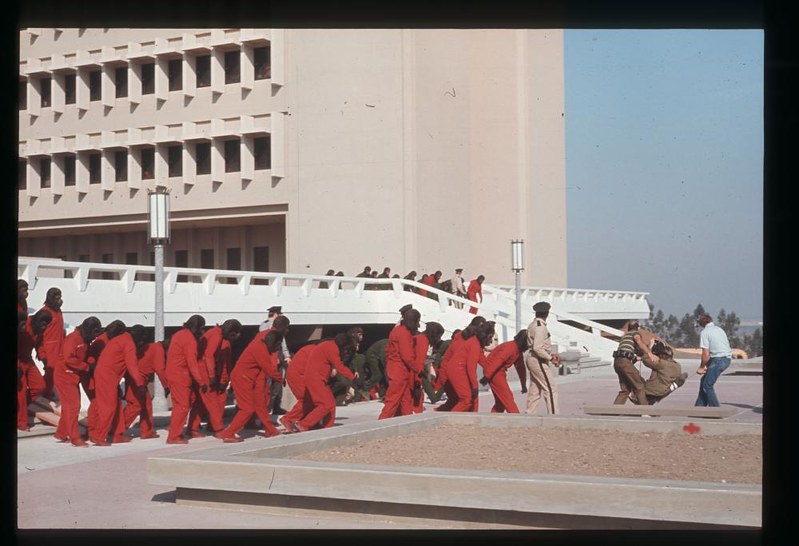 |
| Another screen capture from "Conquest of the Planet of the Apes. That's the Social Sciences Tower in the background, which was completed that same year and was probably not yet even occupied yet. |
In 1977, Pereira was replaced as campus architect by David Neuman, who immediately announced that he was throwing out Pereira's careful plan and that the campus was "growing up". By this, he meant that he was abandoning the pastural setting to create a more urban campus that no longer respected the circular design. Neuman invited post-modern architects like Charles Moore, Venturi & Brown, and Robert A.M. Stern to design new buildings on campus. Gone were the modernist patterns and details, as well as the concrete pedestals floating over the landscape. The bulldozers had arrived.
Charles Moore (a post-modern architect who has done some beautiful work, such as Sea Ranch, but who also designed one of my personal least favorite projects ever, the Piazza d'Italia in New Orleans), said of the UCI campus and Pereira's work that it "suffered from the failed optimism of the 1960s." Here's how Mr. Moore decided to improve the built environment on campus...
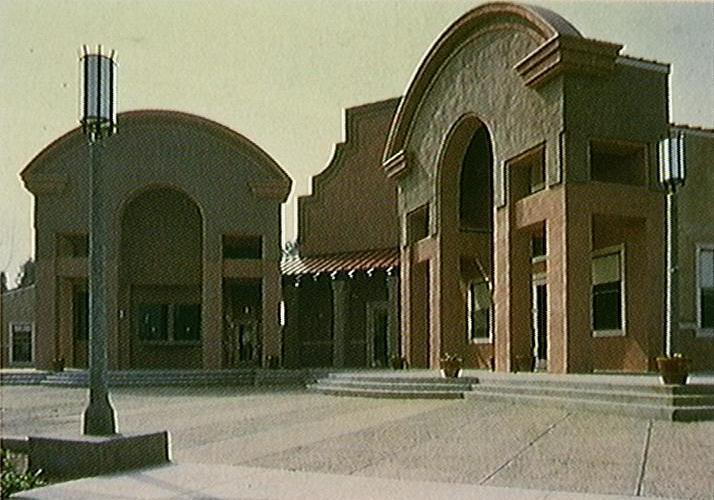 |
| Moore's University Extension Program building on the UC Irvine campus. I think my local strip mall borrowed this design for their Marshall's store. Photo courtesy of UC Irvine Archives. |
Leon Whiteson, architecture critic for the LA Times, wrote in a December 1988 article that Pereira's buildings were "over-scaled and boringly detailed."
I have a somewhat personal connection to UCI. In 1990-1992, my best friend at the time was a student here and I used to to stay with him in the dorms quite a bit. I remember already how interesting I thought the architecture was around the quad, but how he was telling me that everyone referred to the old buildings as giant cheese graters.
 |
| Another view of Krieger Hall by Pereira, with Jones & Emmons, and Blurock Ellerbroek (1963). Photo ©Darren Bradley |
As I was wandering around campus yesterday afternoon, I came up to Steinhaus Hall, which is one of the original buildings designed by Pereira in 1963. It originally looked like this:
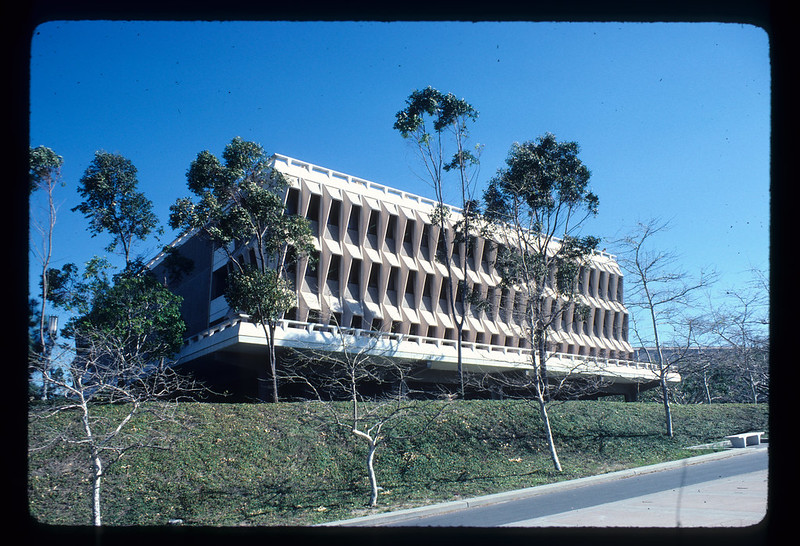 |
| Steinhaus Hall by William Pereira Associates (1963). Photo courtesy of UCI Archives. |
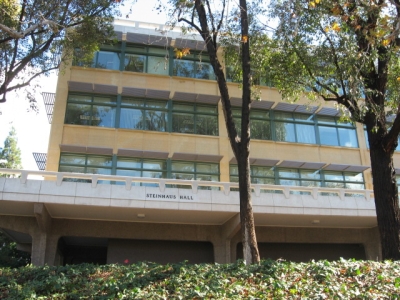 |
| I couldn't bring myself to photograph it. This is from UCI's website. |

For more information on another University of California campus that was (and continues to be) defined by its modernist/brutalist heritage, please check out my posts on UC San Diego here, here and here.

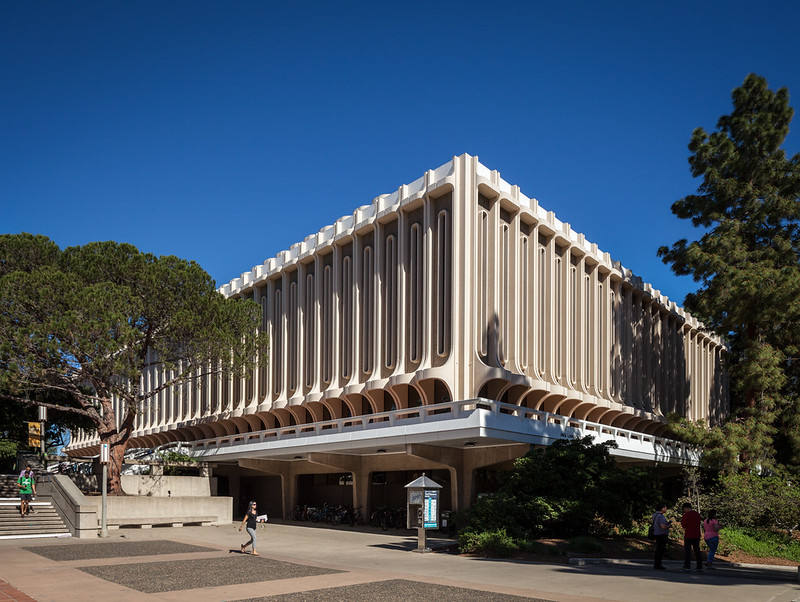
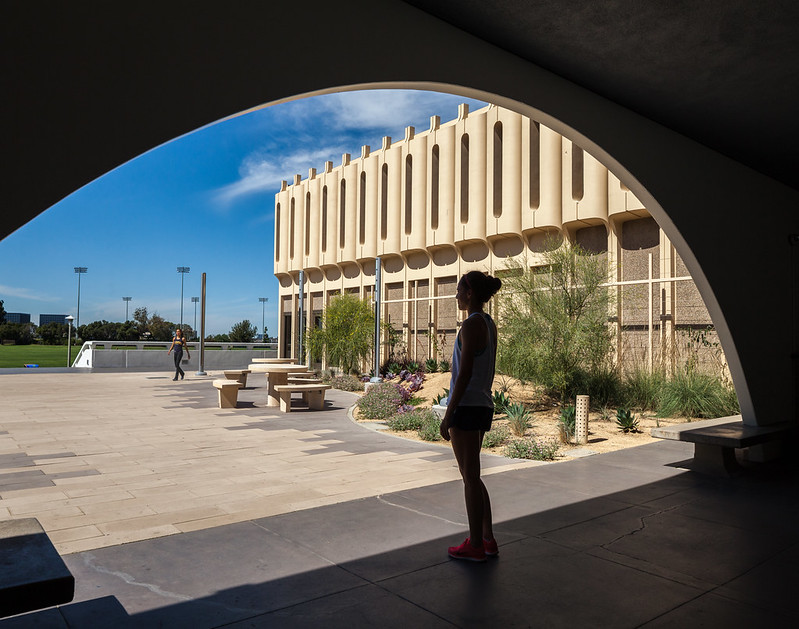
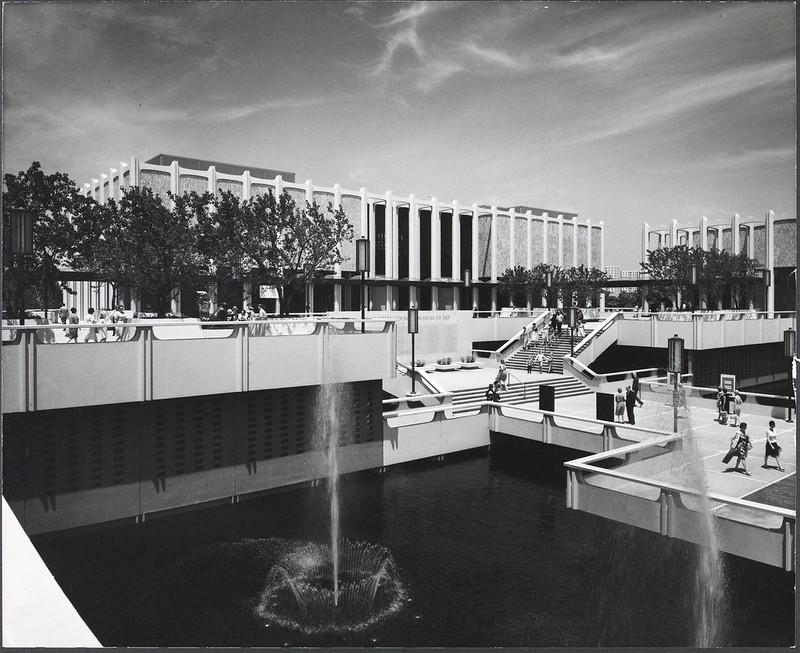
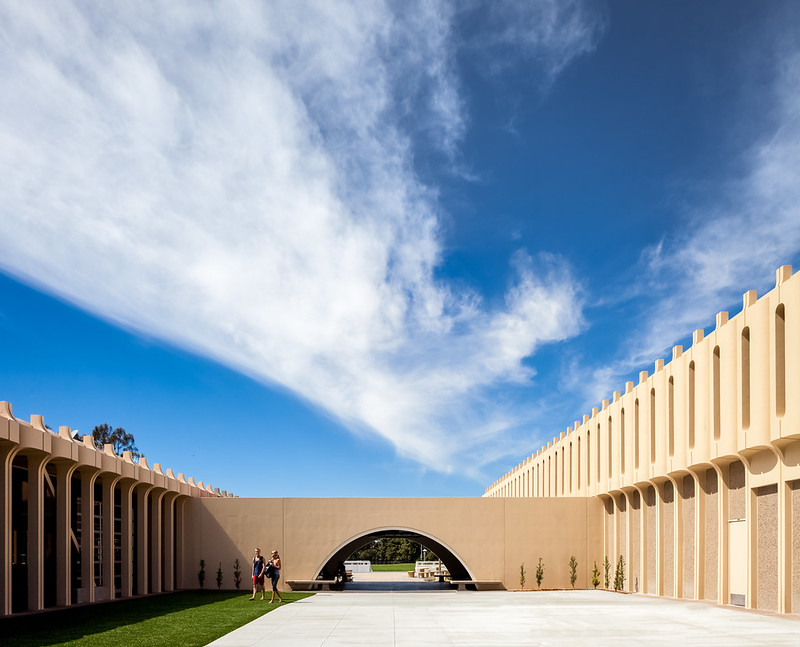
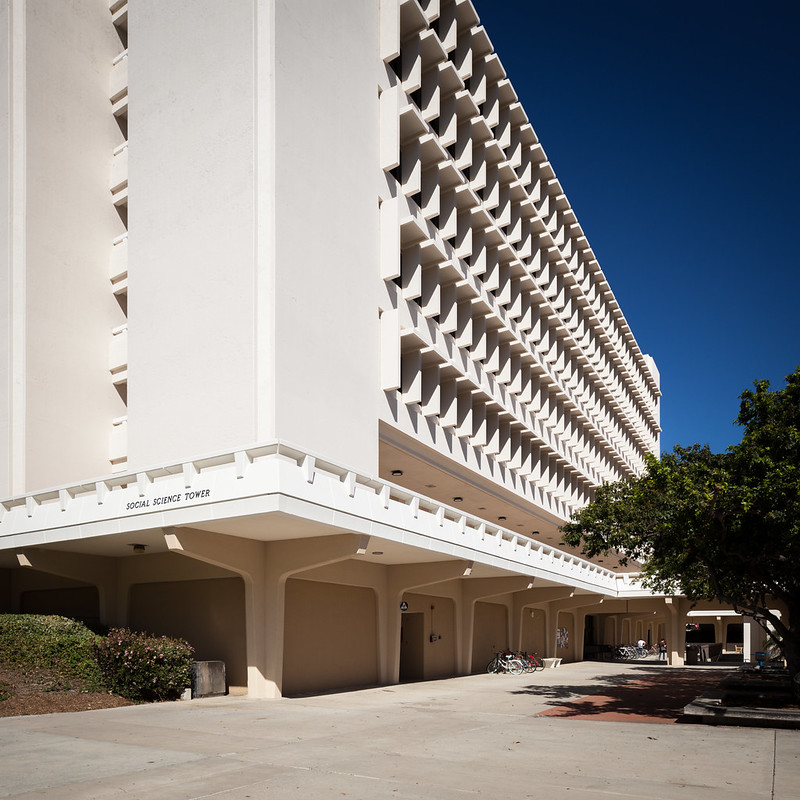
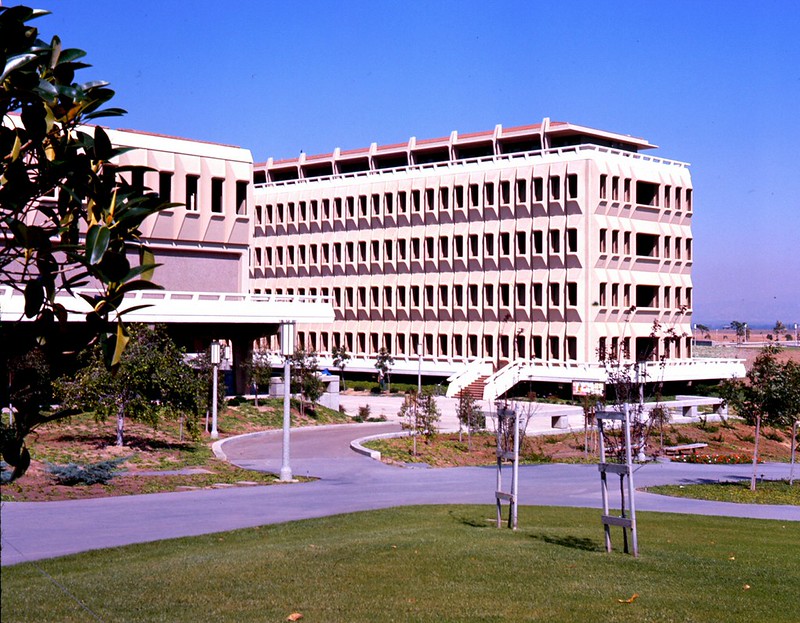
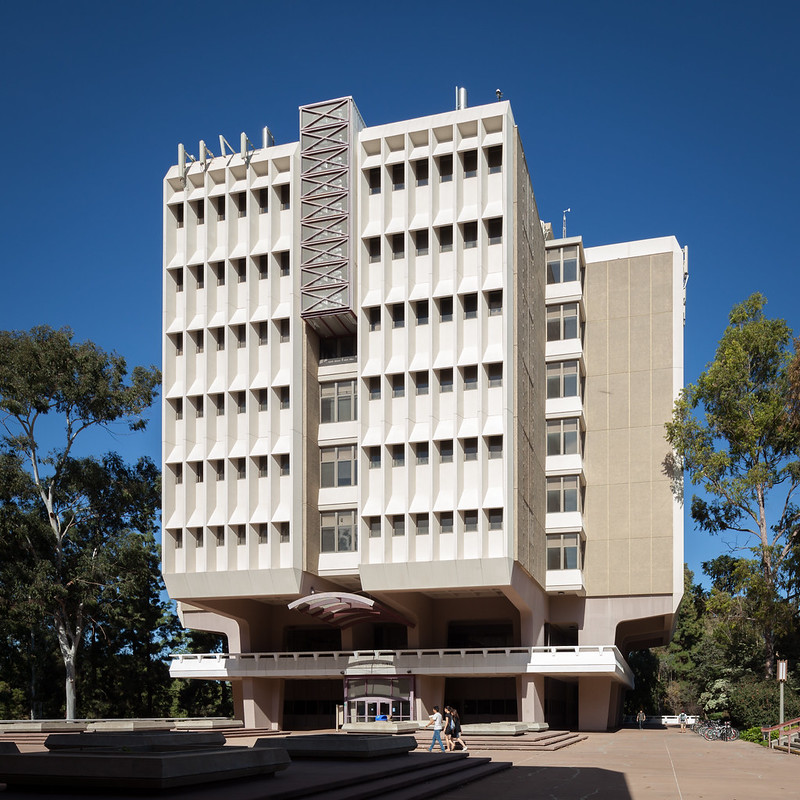
No comments:
Post a Comment